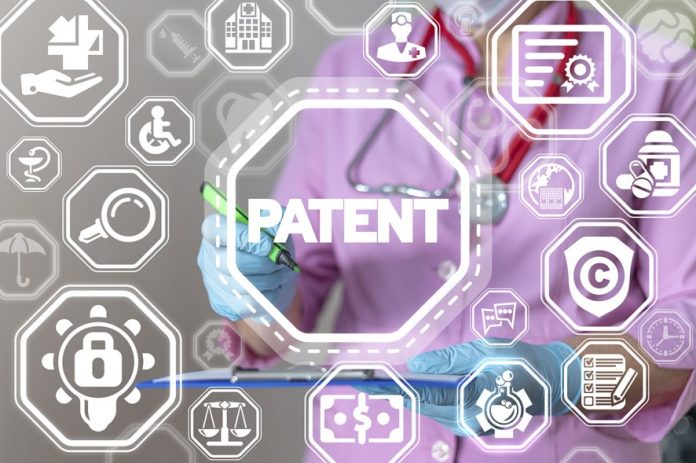This article is written by Daksh Ghai, from Symbiosis Law School, Noida. The article provides a brief overview of the Trade-Related Aspects of Intellectual Property Rights (TRIPS) agreement. It also talks about the Doha declaration and its impact on developing nations.
Table of Contents
Introduction
The World Trade Organization (WTO) is a multilateral member organisation whose goal is to liberalise trade by reducing barriers to trade and enabling enhanced global trade while also assisting developing countries and least developed countries (LDCs) in their integration into the WTO multilateral system. The pharmaceutical industry is a high-risk industry. The danger of failure outweighs the danger of success. The Doha Declaration was created to acknowledge public health issues.
Doha health declaration : an insight
The World Trade Organization is a group of 164 countries formed in the year 1995. The Ministerial Conference, which occurs every two years, is the WTO’s highest decision-making authority. In the 4th Ministerial Conference in Doha in 2001, the WTO Agreement on Trade-Related Aspects of Intellectual Property Rights (TRIPS) was a key topic. When TRIPS was first introduced, it went far beyond the Paris Convention; it allowed members to use certain kinds of flexibility like granting compulsory licenses for the purpose of supply in domestic markets. TRIPS issued the Doha declaration of Public Health, which allowed for the granting of a compulsory licence for export reasons. The Doha Declaration acknowledged that this constraint on compulsory licencing could make it difficult for nations with little or no pharmaceutical manufacturing capacity to apply it effectively. It was mainly to prevent or remedy the legal impediment created by the regulations of the TRIPS agreement, which stated that a compulsory licence could only be given for the purpose of delivering domestic markets, thereby creating legal barriers for exports through compulsory licences.
The role in developing countries
Public health benefits
Invoking Article 51 of the Thai Patent Act, the Thai government announced its decision to exercise the Compulsory licence on Efavirenz in November 2006 and held that the usage of Efavirenz’s patent right will be valid until December 2011, and the drug will be provided to 200,000 patients covered by the National Health Security Act. The patent holder would be paid a royalty of 0.5 per cent of the overall value of Efavirenz sales, whether imported or produced locally, according to the notification. Despite the fact that the drug’s price was fairly high and the Thai government’s budget was less, there were numerous disputes. However, eventually, WHO officials published a letter stating that they supported the Thai government’s decision to satisfy the drug’s demand.
Aids in obtaining price reductions
In July 2001, Malaysia’s Ministry of Health requested price reductions on a variety of HIV drugs in order to enhance the country’s HIV treatment coverage. After failing to reach an agreement with the patent owning corporations, the government decided to allow generic manufacturer imports. Despite the fact that patent owning businesses decided to reduce the drug costs following the authorization, the government moved forward with its choice to import. The monthly cost of the medication dropped from US$362.63 in 2001 to $115.14 in 2004, well after the advent of the generic supply.
India and Doha health declaration patent laws
Throughout the years, the Indian patent system has routinely been amended, partially as a result of divergent viewpoints and shifting priorities among government, local industry, public, NGOs, and other stakeholders. The move to product patents in India was rapid. As a signatory to the TRIPS Agreement, India has amended its Patent Act ,1970, once in 1999, allowing for the filing of product patent applications in the areas of drugs, pharmaceuticals, and agrochemicals, even though such patents were previously prohibited, as well as adding a mailbox facility to accept product patent applications and exclusive marketing rights (EMR). In 2002, the Act was amended again, and the patent period was increased to 20 years. From January 1, 2005, full patent protection was granted in all disciplines of innovation, including pharmaceuticals, under provisions relating to the issuance of compulsory licences. While this is expected to limit the generic industry’s ability to develop generic pharmaceuticals during the life of a protected product, the Patent Act modifications ensure that India can exercise flexibility to a great extent. In December 2004, an ordinance was passed, followed by the Patent (Amendment) Act, 2005 which was passed by Parliament in March 2005.
Measures taken to stop the monopoly powers of the MNCs
The government of India enacted Section 3(d) of the Patents Act of 1970 to keep medicine prices under control. It was created to prevent the patents from becoming evergreen. Any pharmaceutical company’s goal would be to maximise profits. Companies used to appoint a research team after 20 years, i.e. when the protective period ended and a patent became an off-patent. They would conclude that the drug’s efficiency had decreased in 20 years. They would make some minor changes, come up with a new product and apply for a patent. If the patent is awarded minor changes to the previous product, the corporation will have a 20-year monopoly. Section 3(d) made it harder for corporations to apply for a patent without improving the substance’s established efficacy.
A brief overview of the Novartis case
In Novartis Ag v. Union Of India & Ors (2013) Gleevec, a cancer medication was developed by Novartis and granted exclusive marketing rights (EMR) in 2003. Following the EMR, additional Indian companies making the generic version of Gleevec were forced to halt production. Natco, a generic producer, filed a pre-grant opposition arguing that Novartis’ crystalline modification of the medication is an ever-greening technique and that the claimed “polymorph” is the same molecule with a 1993 patent date. As a result, Novartis’ patent application for Gleevec was denied by the Chennai Patent Office in January 2006. If Gleevec would have been given a patent, the generic producers would then have been required to discontinue its production, and the cost of Gleevec, which should be taken by cancer patients for the rest of their lives, would have been Rs 1,20,000 per month, as opposed to Rs 8000 per month if made by generic companies. The Indian patent office refused to issue a patent on Gleevec, allowing generic manufacturers to continue producing the drug. The Supreme Court in the Novartis case defined enhanced efficiency as therapeutic efficiency and minor improvements can not be considered as therapeutic and rejected the application.
Compulsory license
Compulsory licencing can be given for a variety of reasons. It will be determined by national legislation. The goal of giving a compulsory licence in India is to ensure that patented inventions are commercialised in India and that the interests of anyone working on or developing an invention are not harmed. Section 82 to 94 in Chapter VI of The Indian Patent Act. These Sections cover the following topics: general principles relevant to the operation of patented inventions; the basis for grant of Compulsory licencing; matters to be considered by the patent controller when considering Compulsory licencing applications; procedures for dealing with compulsory licencing applications; general purposes for granting Compulsory licencing; and terms and conditions of compulsory licencing.
Pros of the Doha Agreement
The right to issue a compulsory licence for export purpose
“The right to grant compulsory licences” is one of the Doha Declaration’s flexibilities. A compulsory licence is a licence granted by a government agency or a court to make specific uses of a patented invention without the patent holder’s approval. This approach is available in most patent laws and is recognised as a valid alternative or flexibility under the TRIPS Agreement, and has been implemented in the pharmaceutical industry by a number of WTO countries. TRIPS laws, on the other hand, initially limited compulsory licence to serving primarily the local market, unless they were issued to address anti-competitive behaviour. The Doha Declaration acknowledged that this constraint on compulsory licencing could make it difficult for nations with little or no pharmaceutical manufacturing capacity to apply it effectively. The TRIPS agreement has been amended to address this problem by introducing a new type of compulsory licence: a compulsory licence specifically designed for the export of medicines to developing nations.
Access to patented medicines to the countries that can not manufacture the medicines themselves
The TRIPS Agreement’s new Article 31(b) gives full legal validity to this arrangement, allowing low-cost generic pharmaceuticals to be produced and exported under a compulsory licence solely to meet the needs of nations that cannot manufacture those items themselves. An interim waiver will continue to apply to the minority of WTO members who have yet to adopt the change. Developed countries will also be required to provide the least developed countries with incentives to enterprises and institutions in their territory in order to promote and encourage technology transfer, according to paragraph 7 of the Doha Agreement.

Cons of the Doha Agreement
Commercialisation of medicines
Patents serve as a motivator for the growth of the pharmaceutical business in the private sector. The rationale for granting exclusive rights to patented medications is that, while the development of new drugs is expensive, copying an existing drug is very simple. Despite the commercial sector’s desire for patent protection, a number of developed and developing countries had typically placed public policy constraints on medicine patentability. To prevent commercialization in the health industry, the Patents Act of 1970 imposed restrictions on product patents for medications. The adoption of the TRIPS agreement required nations with patentability limits, such as India, to substantially change their patent laws in order to meet their WTO legal commitments. While the TRIPS agreement required patent protection to be granted for 20 years, India granted patent protection for a term of merely 5 to 7 years.
The road ahead of the Doha negotiations
The Doha Declaration is a minor step toward recognising the unique health situation in the context of patent laws and treaties. According to the World Health Organization, a number of socioeconomic reasons have contributed to the decreasing availability of cheap pharmaceuticals in developing countries. The World Health Organization (WHO) acknowledges four main elements that influence medicine access: reasonable selection and use, affordable costs, sustainable finance, and a solid supply system. Many diverse stakeholders have a role to play in transforming these variables into enablers rather than barriers. These stakeholders can be the Governments of developing nations, governments of developed countries, manufacturers, consumer groups, non-governmental organisations, international organisations, and private foundations. As a result, TRIPS-related reforms will be insufficient and importance can be given to other recommendations.
1) Public funding for health research in developing countries should be increased.
2) The additional funding should be utilised to utilize and improve existing capacities in developing countries, as well as to promote new capacity in the public and private sectors.
3) Governments in both developing and developed countries should take a more active role in creating risk-prevention strategies, including increased funding for scientific research, improved monitoring systems, and better global information access.
4) International efforts to find realistic, cost-effective, and transparent ways to increase access to low-cost drugs should be encouraged.
5) In the case of disease crises, international collaboration should be encouraged and WTO should collaborate with other relevant international institutions and non-governmental organisations.
6) The pharmaceutical companies should uphold their corporate social responsibility and address public concerns about accountability and the social and economic consequences of its relatively expensive goods.
Conclusion
The Doha Declaration is a notable accomplishment for the developing and least developed countries attempting to obtain access to patented medicines. It promotes the use of the patent right of the innovation for public purposes without the permission of the patent holder. The declaration underlines the importance of intellectual property protection for developing new medicines whilst highlighting the scope of the TRIPS Agreement, enabling the state better access to medicines. The domestic patent law reforms adopted in India enable the manufacture of patented drugs and, as a result, provide access to medicines both within and beyond the country to a considerable extent.
References
- https://ipindia.gov.in/writereaddata/Portal/IPOAct/1_31_1_patent-act-1970-11march2015.pdf
- https://www.who.int/medicines/areas/policy/WHO_EDM_PAR_2002.3.pdf
- https://www.wto.org/english/tratop_e/trips_e/implem_para6_e.htm
- https://globalizationandhealth.biomedcentral.com/articles/10.1186/1744-8603-7-32
LawSikho has created a telegram group for exchanging legal knowledge, referrals, and various opportunities. You can click on this link and join:
https://t.me/joinchat/J_0YrBa4IBSHdpuTfQO_sA
Follow us on Instagram and subscribe to our YouTube channel for more amazing legal content.











